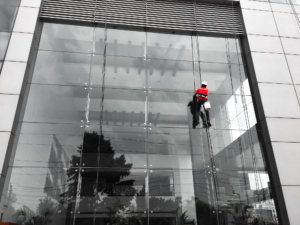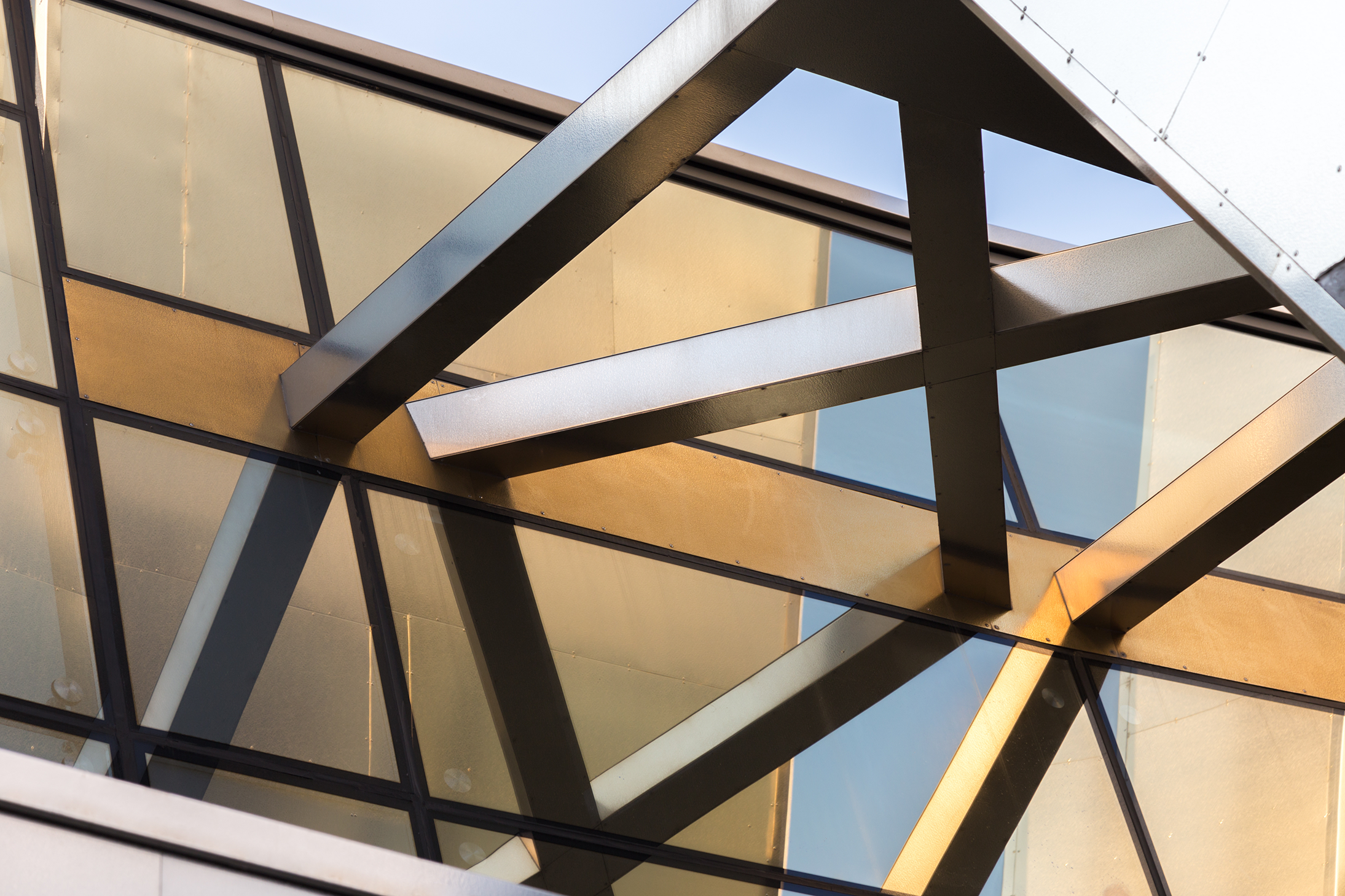Architectural glass products play a major role in the comfort of living and working environment of
today’s homes and commercial office spaces. By providing natural daylight, views of the surroundings,
thermal comfort and design aesthetics, glass usage and condition often affect our selection of where we
live, work, shop, play and seek education.
Architectural glass products must be properly cleaned during construction activities and as a part of
routine maintenance in order to maintain visual and aesthetic clarity. Since glass products can be
permanently damaged if improperly cleaned, glass producers and fabricators recommend strict
compliance with the following procedures for properly cleaning glass surfaces.
As dirt and residue appear, interior and exterior glass surfaces should be thoroughly cleaned. Concrete or
mortar slurry which runs down (or is splashed on) glass can be especially damaging and should be
washed off as soon as possible. Before proceeding with cleaning, determine whether the glass is clear,
tinted or reflective. Surface damage is more noticeable on reflective glass as compared with the other
glass products. If the reflective surface is exposed, either on the exterior or interior, special care must be
taken when cleaning, as scratches to the reflective glass surface can result in coating removal and a visible
change in light transmittance. Cleaning tinted and reflective glass surfaces in direct sunlight should be
avoided, as the surface temperature may be excessively hot for optimum cleaning. Cleaning should begin
at the top of the building and continue to the lower levels to reduce the risk of leaving residue and
cleaning solutions on glass at the lower levels. Cleaning procedures should also ensure that the wind is
not blowing the cleaning solution and residue onto already cleaned glass.
Cleaning during construction activities should begin with soaking the glass surfaces with clean water and
soap solution to loosen dirt or debris. Using a mild, non-abrasive commercial window washing solution,
uniformly apply the solution to the glass surfaces with a brush, strip washer or other non-abrasive
applicator. Immediately following the application of the cleaning solution, a squeegee should be used to
remove all of the cleaning solution from the glass surface. Care should be taken to ensure that no metal
parts of the cleaning equipment touch the glass surface and that no abrasive particles are trapped between
the glass and the cleaning materials. All water and cleaning solution residue should be dried from window
gaskets, sealants and frames to avoid the potential for deterioration of these materials as the result of the
cleaning process.
It is strongly recommended that window washers clean a small area or one window, then stop and
examine the surface for any damage to the glass and/or reflective coating. The ability to detect certain
surface damage, i.e. light scratches, may vary greatly with the lighting conditions. Direct sunlight is
needed to properly evaluate a glass surface for damage. Scratches that are not easily seen with a dark or
gray sky may be very noticeable when the sun is at a certain angle in the sky or when the sun is low in the
sky.
GANA 01-0300
2
Copyright GANA, 2000
The glass industry takes extreme care to avoid glass scratches by protecting all glass surfaces during glass
manufacturing and fabrication, as well as during all shipping and handling required to deliver the glass to
the end user. A large percentage of damaged glass results from non-glass trades working near glass. This
will include painters, spacklers, ironworkers, landscapers, carpenters and others who are part of the
construction process. They may inadvertently lean tools against the glass, splash materials onto the glass
and/or clean the glass incorrectly, any of which can permanently damage glass.
One of the common mistakes made by non-glass trades people, including glass cleaning contractors, is
their use of razor blades or other scrappers on a large portion of the glass surface. Using 2, 3, 4, 5 inch
and larger blades to scrape a window clean carries a large probability for causing irreparable damage to
glass.
The entire industry of glass manufacturers, fabricators, distributors, and installers neither condones nor
recommends widespread scraping of glass surfaces with metal blades or knifes. Such scraping will often
permanently damage or scratch the glass surfaces. When paint or other construction materials cannot be
removed with normal cleaning procedures, a new 1″ razor blade may need to be used only on non-coated
glass surfaces. The razor blade should be used on small spots only. Scraping should be done in one
direction only. Never scrape in a back and forth motion as this could trap particles under the blade that
could scratch the glass. This practice may cause hairline concentrated scratches, which are not normally
visible when looking through the glass, but may be visible under certain lighting conditions.
Jobsite storage and construction conditions can lead to stains on the glass surface. Cleaning and removal
of such stains may require the use of a more aggressive cleaning solution and procedure. If conditions are
found that cannot be cleaned using the above procedures, contact the glass supplier for guidelines on stain
removal.
Members of the Glass Association of North America (GANA) publish information relating to jobsite
protection and cleaning of architectural glass products. In order to ensure long-term performance of the
glass in a building, GANA encourages glazing contractors, general contractors, building management and
owners to be aware of conditions that can damage glass and to follow the handling and cleaning
guidelines provided by their glass producer and fabricator.
Consult the GANA website (www.glasswebsite.com) for additional information on glass and glazing
applications and links to members providing additional technical resources.


